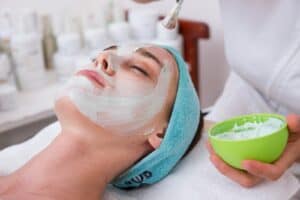Table of Contents:
- Introduction to In-Home Testing
- Benefits of In-Home Testing
- Gathering Consumer Insights
- Enhancing Product Claims
- Ensuring Accurate Labeling
- Leveraging Feedback for Innovation
- Future Trends in Skincare Testing
Introduction to In-Home Testing
As consumer expectations for transparency and product efficacy continue rising, skincare brands seek innovative ways to validate their claims. One such innovation is the shift toward decentralized, user-centric testing methodologies. In recent years, the skincare industry has embraced skincare testing methods that bring the testing environment into the consumer’s home. This cost-effective approach provides real-world data that can be instrumental in shaping product claims and labeling. In-home testing aligns with the natural settings of product use, offering invaluable insights into how products perform under typical conditions that more traditional laboratory settings might not replicate.
Benefits of In-Home Testing
In-home testing offers a myriad of benefits, both for consumers and manufacturers. For one, it allows consumers to engage with products in their everyday environments over extended periods. This testing method accurately captures user experiences and provides companies with data under real-world conditions, improving the reliability of their product assessments. These actionable insights often lead to refining formulations and enhancing consumer satisfaction. Compared to laboratory environments, in-home testing presents a more cost-effective and extensive methodology, allowing companies to gather large volumes of data seamlessly.

Gathering Consumer Insights
A key advantage of in-home testing lies in its ability to collect extensive consumer feedback. This feedback is not limited to simple likes and dislikes; it delves into more nuanced observations such as texture, scent, and long-term effects on skin conditions. Such detailed insights help manufacturers understand consumer preferences and product shortcomings, directing future iterations of product lines. As illustrated in research conducted by industry experts, leveraging broad consumer interactions provides a comprehensive understanding of product performance across diverse demographics, enabling more personalized product formulations.
Enhancing Product Claims
The data collected from in-home testing is pivotal in substantiating and enhancing product claims. Real-world data allows brands to support their advertising narratives with verified consumer experiences. This process is crucial for avoiding exaggerated claims that could lead to regulatory scrutiny. By corroborating claims with factual consumer testimonials, brands can maintain transparency and integrity, which are fundamental to building consumer trust. The alignment of product claims with actual results further aids in meeting regulatory requirements, illustrating the importance of evidence-backed advertising.
Ensuring Accurate Labeling
Accurate product labeling is integral to consumer safety and regulatory compliance. In-home testing gives brands the information to ensure their labeling accurately reflects product properties and usage scenarios. This transparency is vital in communicating potential allergens or specific usage instructions to consumers, minimizing the risk of adverse reactions. As the FDA regulations emphasize, accuracy in labeling is crucial for meeting legal standards and securing consumer trust.
Leveraging Feedback for Innovation
Feedback gathered through in-home testing isn’t solely about product improvement; it is a catalyst for innovation. Through this process, companies can identify emerging consumer needs or preferences that can inform the development of entirely new product lines. Whether it’s a demand for specific natural ingredients or requests for more inclusive shade ranges, consumer feedback creates a dialogue that can drive industry trends and influence brand strategies. This proactive approach keeps companies ahead of market shifts and enhances their reputation as responsive and consumer-focused.
Future Trends in Skincare Testing
The future of skincare testing is set to embrace more personalized and technology-driven approaches. With AI and data analytics advances, companies can analyze feedback from in-home testing more efficiently and derive deeper insights. Personalized skincare solutions are gaining traction, and the data from in-home tests could aid in tailoring products to individual needs, considering variables such as climate and lifestyle. This trend towards customization and sustainable and ethical testing practices will likely define the next steps in skincare testing methodologies, ensuring products are effective and aligned with consumer values and environmental considerations.



